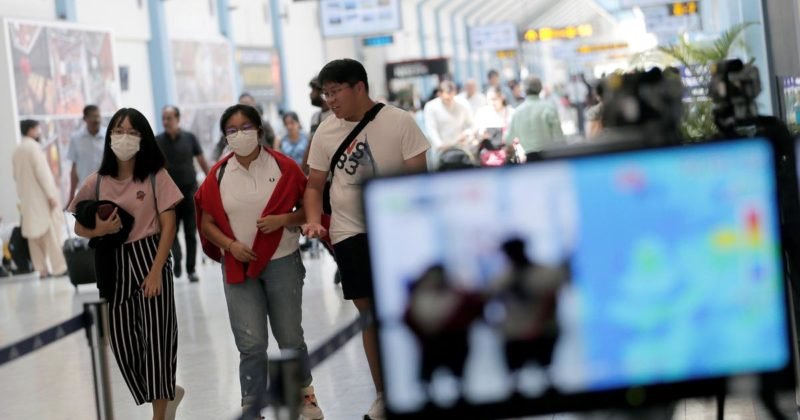Here are the top countries tweeting #WuhanVirus

As the World Health Organisation’s decision-making body, World Health Assembly, goes ahead with the resolution for an independent investigation into the coronavirus pandemic, China has pledged $2 billion to the organisation, saying it will help in the response to the pandemic and the economic and social development over next two years, particularly in developing countries.
The Trump administration has called the pledged amount “a token to distract from calls from a growing number of nations demanding accountability for the Chinese government’s failure to meet its obligations under international health regulations to tell the truth and warn the world of what was coming” and added that “as the source of the outbreak, China has a special responsibility to pay more and to give more”.
Such strong-worded criticism from Washington comes as more and more people tend to believe the virus came from a Chinese lab and they hold the country’s government responsible for the pandemic. A recent poll found that 49% of Americans believed the virus came from a lab and 66% held China responsible for the pandemic. This may explain why 55.2% of all tweets with the hashtag of “Wuhan Virus” have come from the United States.
Like in the United States, in India too, the public sentiment is stacked against China. A poll has found that 67% of Indians hold China responsible for the pandemic and 50% do not believe that calling coronavirus “Chinese virus” or “Wuhan Virus” is racist.

The Kootneeti has found that most of the #WuhanVirus posts on Twitter have come from places with which China has had heightened tensions lately — Hong Kong (15%), India (12.8%), Canada (3.6%), Australia (1.9%), Japan (1.5%), in addition to the United States (55.2%).
Hong Kong witnessed months-long protests against Beijing’s encroachment into its autonomy. Canada has witnessed tense relations with China that have involved retaliatory arrests and firing and departure of ambassadors. As for India, as this story is being written, Indian and Chinese troops are locked in face-offs along the contested India-China border. The United States has long been fighting a trade war with China.
Regionally, these are the countries that compete with China. The Quadrilateral Security Dialogue, commonly called the Quad, is a grouping of Australia, India, Japan, and the United States, which is committed to a free, open, and rules-based order in the Indo-Pacific which the United States believes is threatened by Chinese maritime expansionism. These countries together make up for 71.4% of #WuhanVirus posts as per The Kootneeti’s data.
For these countries, the coronavirus pandemic is just the latest in the series of aggressions from Chinese, and #WuhanVirus is an attempt to hammer the view that China should not get away unscathed. Chris Cillizza, CNN’s Editor-at-Large, has commented that President Trump’s push for #ChineseVirus is a “concerted effort by the President and some in his administration to change the public understanding of this as a global pandemic that’s every nation’s responsibility to: China did this.”
China has pushed back against such labelling. In a telephonic conversation with Indian Foreign Minister S Jaishankar, his Chinese counterpart Wang Yi asked India to not use the term Chinese Virus and said such labelling is unacceptable. WHO has made similar appeals.
The countries and the regions that are absent from the #WuhanVirus wagon are largely South Asian countries like Pakistan, and regions like Southeast Asia and South America — places with substantial Chinese investments that would naturally disallow them vocal criticism.
Both China and its competitors see the pandemic as an opportunity. As opposed to its competitors’ attempts to portray China as the place that spread the virus to the world, China, after containing the outbreak in Wuhan, has tried to project itself as an aid-provider to the world rather than as the global spreader. The country has called its response to the world as the making of the “health silk road”.
The #WuhanVirus Vs Coronavirus is, therefore, part of the larger confrontation between the two sides where one sees it as the opportunity to nail China and change the narrative around the People’s Republic, whereas China, in words of Keyu Jin of the London School of Economics, sees this as the “opportunity of the century” to build trust in the world that it has found so difficult to come by.
Data Size: 13142 tweets between May 11 to May 17, 2020 | Data credits: Amal Sinha (Consulting Editor at The Kootneeti). For more details on this data and similar trends please reach out to team@thekootneeti.com for quotes.


















